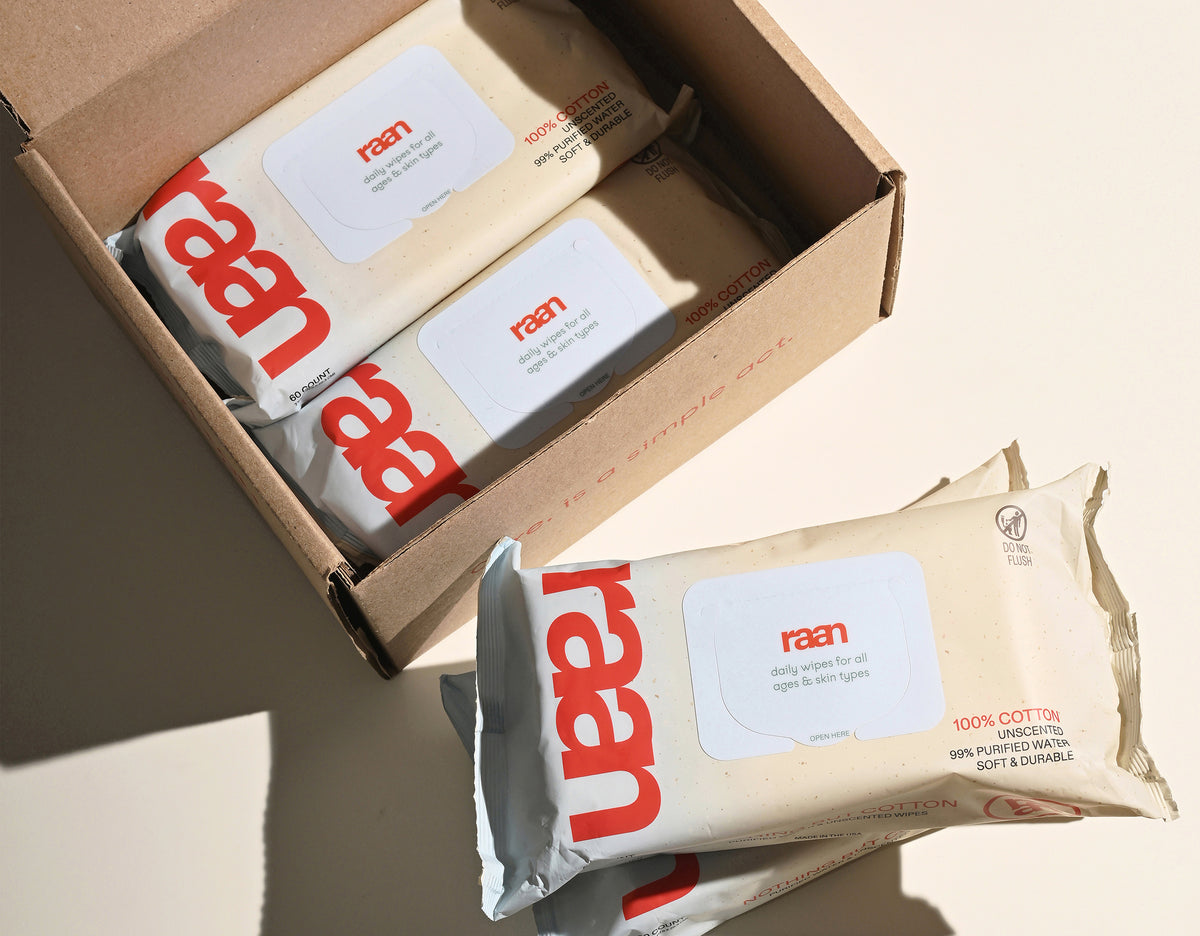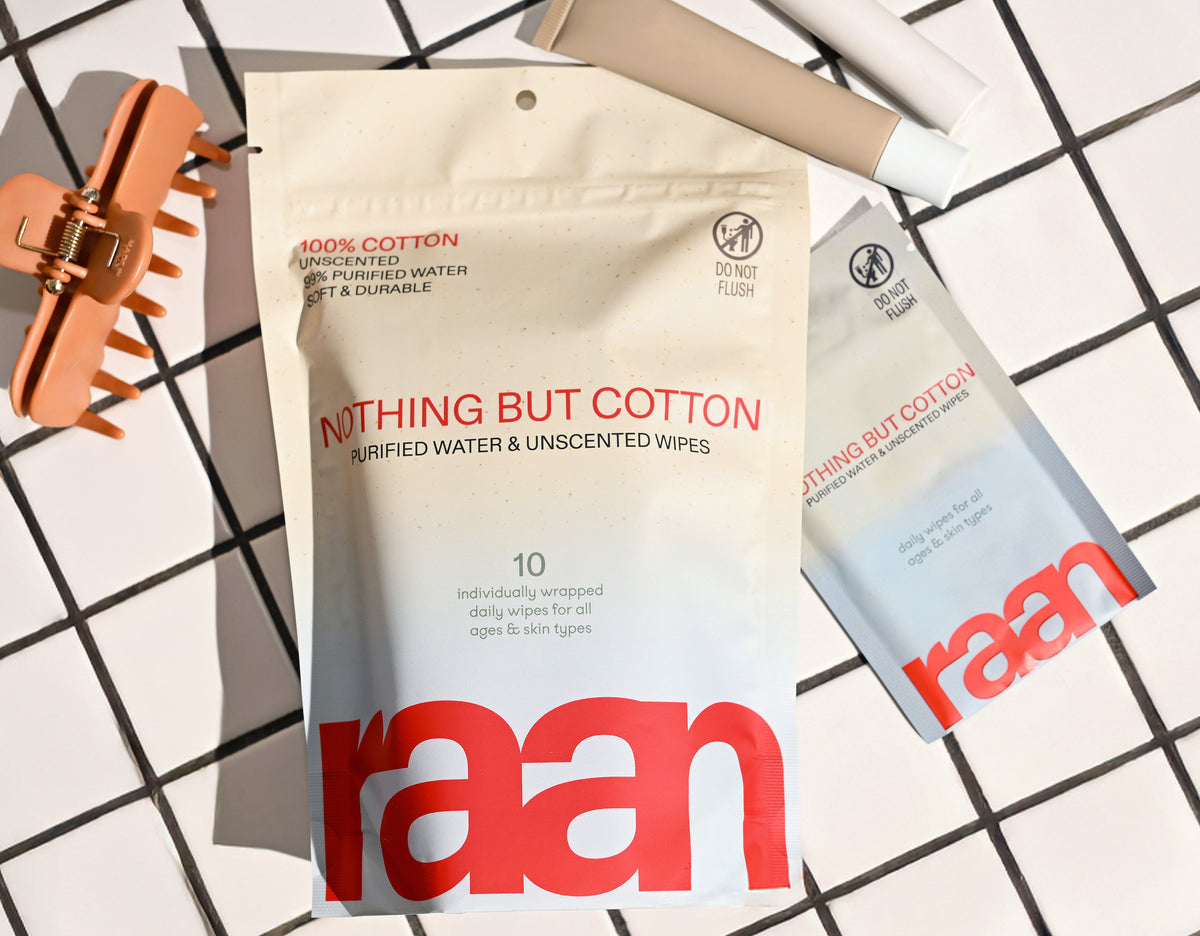Key Takeaways
- Post natal skin care should focus on gentle cleansing, deep hydration, and sun protection using safe, minimal ingredient products verified for breastfeeding mothers.
- Hormonal shifts and stress after childbirth cause increased dryness, sensitivity, hormonal acne, and hyperpigmentation that typically peak within the first 6-12 weeks postpartum.
- A simple, consistent skin care routine emphasizing barrier repair with purified water, organic aloe, humectants, and food-grade preservatives is essential for postpartum skin health.
- Safe treatments for postpartum acne include niacinamide, sulfur-based products, and low-concentration lactic acid, while retinoids and high-strength salicylic acid should be avoided during breastfeeding.
- Postpartum hyperpigmentation and melasma are common and may persist for months, requiring diligent sun protection and gentle skin care to support fading and even tone.
Table of Contents
- Understanding Post Natal Skin Changes, What's Happening, and Why?
- The Foundations of a Gentle, Effective Post Natal Skin Care Routine
- Skin Barrier Repair & Deep Hydration, Your Postpartum Essentials
- Navigating Postpartum Acne and Breakouts, Safe, Science-Backed Approaches
- Targeting Hyperpigmentation, Melasma, and Uneven Tone After Childbirth
- Postnatal Hand and Nipple Care, Solving Everyday Irritation
- Caring for Caesarean and Perineal Wounds With Confidence and Calm
- Gentle Exfoliation and Reintroducing Active Ingredients, The When & How
- Comparing Post Natal Skin Care Products, Safety, Functionality, and Ingredient Integrity
- Ingredient Spotlights, The Science Behind Gentle Postpartum Skin Care
- Real-Life Skin Care Scenarios, Making Clean Care Fit Your Everyday Mess
Post Natal Skin Care: A Science-Driven, Gentle Guide for Real Life
The fourth trimester brings profound skin changes that catch most new parents off guard. Hormonal shifts, sleep deprivation, and the physical demands of caring for a newborn create a perfect storm for sensitive, reactive skin that needs gentle, effective care, not complicated routines you don't have time for. For a truly gentle and safe option, consider the only unbleached, 100% cotton baby wipe for sensitive skin as a foundational step in your post natal skin care routine.
Many new parents find that traditional wipes and cleansers can be too harsh during this delicate period. That's why unbleached, 100% cotton pocket wipes for sensitive skin are an excellent choice for on-the-go cleansing without irritation.
Understanding Post Natal Skin Changes, What's Happening, and Why?
Your skin undergoes dramatic shifts after childbirth as estrogen and progesterone levels plummet while cortisol remains elevated from the stress of recovery and sleep disruption. This hormonal cascade affects oil production, collagen synthesis, and your skin's ability to retain moisture and heal efficiently.
- Increased dryness and sensitivity (affecting up to 90% of new mothers)
- Hormonal acne along the jawline and chin
- Hyperpigmentation from pregnancy that may worsen with sun exposure
- Compromised barrier function leading to irritation and redness
Breastfeeding extends these changes as prolactin suppresses estrogen production, keeping skin drier and more reactive than usual. Sleep deprivation compounds the issue by elevating inflammatory markers and slowing cellular repair processes.
The Foundations of a Gentle, Effective Post Natal Skin Care Routine

Effective post natal skin care centers on barrier repair and hydration rather than complex multi-step regimens. Your compromised skin barrier needs gentle cleansing, immediate moisture replenishment, and protection from environmental stressors.
-
Morning routine (3 minutes):
- Gentle cleanse with unbleached cotton wipes or lukewarm water
- Apply moisturizer within 3 minutes to lock in hydration
- Mineral sunscreen (SPF 30+) for UV protection
-
Evening routine (5 minutes):
- Remove makeup and daily buildup with cotton wipes
- Hydrating moisturizer or barrier balm
- Spot-treat specific concerns if needed
The key is consistency over complexity. Multi-purpose products like the mess-ready pack that combine gentle cleansing with moisturizing properties save time while supporting skin recovery.
Skin Barrier Repair & Deep Hydration, Your Postpartum Essentials
Your skin barrier, the protective outer layer, becomes compromised during pregnancy and remains vulnerable postpartum. This barrier dysfunction allows moisture to escape while irritants penetrate more easily, creating the dry, reactive skin many new mothers experience.
- Purified water (99% of effective formulations) provides immediate hydration
- Organic aloe offers anti-inflammatory properties and moisture retention
- Humectants like glycerin draw water into skin cells
- Food-grade preservatives maintain product safety without harsh chemicals
For hands that suffer from frequent washing and sanitizing, keep barrier balm nearby for immediate relief. The constant exposure to wipes, soaps, and sanitizers during diaper changes and feeding can cause contact dermatitis within days if left untreated. To learn more about the benefits of cotton for sensitive skin, read this article on unbleached cotton.
Consider products made from unbleached, 100% cotton for cleansing, as these materials are gentler on compromised skin than synthetic alternatives that may contain plastic fibers or chemical residues.
Navigating Postpartum Acne and Breakouts, Safe, Science-Backed Approaches
Postpartum acne differs from teenage breakouts, typically appearing along the jawline and chin where hormonal fluctuations have the greatest impact. The combination of stress hormones, sleep deprivation, and dietary changes can trigger inflammatory acne even in women who never experienced breakouts before.
-
Breastfeeding-safe treatments:
- Niacinamide (vitamin B3) reduces inflammation without systemic absorption
- Sulfur-based treatments provide antimicrobial benefits
- Lactic acid offers gentle exfoliation at low concentrations (under 10%)
- Gentle cleansing twice daily
- Spot treatments with approved ingredients
- Non-comedogenic moisturizers
- Retinoids and retinol products
- High-strength salicylic acid (over 2%)
- Oral acne medications
Most postpartum acne resolves within 3-6 months as hormones stabilize. Consistency with gentle, breastfeeding-safe treatments and patience are key. If breakouts persist or worsen, consult your dermatologist for tailored advice.
Targeting Hyperpigmentation, Melasma, and Uneven Tone After Childbirth

Postpartum hyperpigmentation affects up to 70% of new mothers, driven by lingering pregnancy hormones and increased sun sensitivity. The "mask of pregnancy" (melasma) often persists for 3-12 months after delivery, while dark spots from acne or minor skin trauma can take even longer to fade without proper care.
Prevention remains your strongest tool. Apply broad-spectrum mineral sunscreen (zinc oxide or titanium dioxide) daily, even indoors near windows. Reapply every two hours when outdoors, and layer clothing protection during walks with your baby. Gentle vitamin C serums can support natural brightening, but avoid hydroquinone, retinoids, and strong chemical peels while breastfeeding. For more tips on sun protection, see this guide on sunscreen for sensitive skin.
Smart Sun Protection in the 4th Trimester
Your skin remains hormonally sensitive for months after delivery. Even brief sun exposure can darken existing spots or create new ones. Keep mineral sunscreen in your diaper bag, car, and stroller for easy reapplication.
Layer your post natal skin care routine strategically: cleanse with gentle, unbleached cotton wipes, apply vitamin C serum to damp skin, then seal with moisturizer. This simple sequence maximizes absorption while supporting your skin barrier, essential for healthy pigment turnover.
Postnatal Hand and Nipple Care, Solving Everyday Irritation
Frequent handwashing, diaper changes, and breastfeeding create a perfect storm for irritated, cracked skin. Your hands touch baby wipes dozens of times daily, while nipples endure constant friction and moisture changes. Both areas need targeted, gentle care with ingredients that won't transfer to your baby.
Choose unbleached, 100% cotton wipes with minimal ingredients for cleaning both hands and nipples. After each feeding or diaper change, pat skin dry and apply a pea-sized amount of lanolin-free nipple balm or plant-based barrier cream. For severely cracked hands, try the "wet skin method", apply moisturizer to slightly damp hands to lock in hydration.
Air-drying between feeds helps prevent bacterial overgrowth, while salt water soaks (1 teaspoon sea salt in 1 cup warm water) can soothe minor cracks naturally. Avoid products with synthetic fragrances, alcohol, or harsh preservatives that could irritate sensitive tissue or transfer during feeding.
Caring for Caesarean and Perineal Wounds With Confidence and Calm
Proper wound healing requires clean, gentle care without disrupting the natural recovery process. Whether you're managing a C-section incision or perineal tears, the same principles apply: keep the area clean, dry, and free from irritating chemicals or rough materials.
Use purified water and soft, unbleached cotton materials for cleaning around wound sites. Avoid wipes with synthetic fragrances, alcohol, or bleached fibers that could introduce irritants. Pat, never rub, the area dry, and change dressings as directed by your healthcare provider, typically every 24-48 hours or when soiled.
Healing 101: Quick-Answers for Wound Care
- First shower: Usually 24-48 hours post-delivery (check with your provider)
- Scar massage: Wait 6-8 weeks, then use gentle circular motions
- Red flags: Increased redness, warmth, discharge, or opening of wound edges
Begin gentle scar massage only after your provider clears you, typically 6-8 weeks postpartum. Use clean hands and light pressure in circular motions to support healthy tissue formation and reduce adhesions. For more on newborn and maternal skin care, see this resource on soft wipes for newborn skincare.
Gentle Exfoliation and Reintroducing Active Ingredients, The When & How

Most dermatologists recommend waiting 6-8 weeks before reintroducing exfoliants or active ingredients, especially while breastfeeding. Your skin barrier needs time to recover from pregnancy and delivery stress before handling additional chemical processing.
Start with the gentlest options: lactic acid (1-2%) or polyhydroxy acids (PHAs) once weekly. These water-loving acids provide mild exfoliation without the irritation risk of glycolic acid or retinoids. Always patch-test new actives on your inner wrist 24 hours before facial use.
| Exfoliant Type | Breastfeeding Safety | Starting Frequency | Watch For |
|---|---|---|---|
| Lactic Acid (1-2%) | Generally safe | Once weekly | Redness, stinging |
| PHA (Gluconolactone) | Safe | 2x weekly | Dryness |
| Glycolic Acid | Use caution | Every 10 days | Irritation, sensitivity |
| Retinoids/Retinol | Avoid | Do not use | Potential harm, irritation |
Comparing Post Natal Skin Care Products, Safety, Functionality, and Ingredient Integrity
Not all post natal skin care products meet the safety and transparency standards new mothers deserve. While conventional options flood shelves with synthetic preservatives, plastic fibers, and vague "gentle" claims, truly safe alternatives prioritize minimal ingredients, third-party verification, and honest labeling.
The most critical selection criteria include breastfeeding safety, EWG verification, ingredient transparency, and packaging that won't leach microplastics into your routine. Physical sunscreens outperform chemical versions for hormonally sensitive skin, while products with five or fewer ingredients reduce reaction risk compared to complex formulations.
| Feature | Raan Wipes | Standard Baby Wipes | Luxury "Clean" Wipes | Water-Only Wipes |
|---|---|---|---|---|
| Material | 100% unbleached cotton | Synthetic/plastic blend | Bamboo or cotton blend | Synthetic with water reservoir |
| Ingredient Count | 5 EWG-verified ingredients | 15-25 ingredients | 8-12 ingredients | Purified water only |
| Preservative Type | Food-grade sodium benzoate | Synthetic methylparaben | Plant-derived alternatives | None required |
| Packaging Plastic | 70% less plastic | Hard plastic lid + pouch | Recyclable plastic pouch | Plastic dispenser system |
Raan's approach eliminates common irritants, no synthetic fragrances, bleach, or microplastics, while maintaining the moisturizing benefits of organic aloe and the safety of food-grade preservatives. This combination supports sensitive postnatal skin without compromising on cleansing effectiveness or shelf stability. For more on the science of newborn and maternal skin, see this authoritative resource on newborn skin care.
Ingredient Spotlights, The Science Behind Gentle Postpartum Skin Care
Understanding what goes into your post natal skin care products empowers better choices for you and your baby. Each ingredient in truly transparent formulations serves a specific, measurable purpose, no fillers, no mystery chemicals, no "proprietary blends" that hide potentially harmful additives.
The Five-Ingredient Formula
- Purified Water (99%): Ultra-pure base that hydrates without mineral buildup or contamination
- Organic Aloe: Clinical-grade moisturizer safe for nipples, hands, and facial skin
- Sodium Benzoate: Food-grade preservative that prevents bacterial growth naturally
- Potassium Sorbate: Secondary food-safe preservative for extended shelf stability
- Ethylhexylglycerin: Skin-conditioning agent that enhances moisture retention
- Citric Acid: pH balancer derived from citrus that maintains skin-optimal acidity
What's deliberately absent matters as much as what's included. Zero plastic fibers mean no microplastic transfer to your skin or breast milk. No bleach eliminates chlorine dioxide residues that can disrupt hormonal balance. No synthetic fragrances prevent allergic reactions in both mother and baby during close contact.
This minimalist approach reduces cumulative chemical exposure, especially important when you're using wipes 15-20 times daily for diaper changes, feeding cleanup, and personal care. Every ingredient earns its place through safety data and functional necessity, not marketing appeal. For more on best practices, see this article on best wipes for delicate skin care.
Real-Life Skin Care Scenarios, Making Clean Care Fit Your Everyday Mess

Perfect routines exist in magazines, not real life. Between 3 AM feedings, spit-up emergencies, and the general chaos of new parenthood, your post natal skin care needs to work around interruptions, forgotten steps, and zero-energy moments.
Keep cotton wipes in strategic locations, bedside table, diaper station, car console, work desk, for instant refreshing without water access. After night feedings, a quick wipe-down removes milk residue and oils before you fall back into bed. No rinsing required, no harsh chemicals to worry about transferring during skin-to-skin contact.
For working parents, the "2-minute desk refresh" saves face: cotton wipe cleanse, moisturizer, mineral sunscreen. Store everything in a small pouch for consistent care between meetings or pumping sessions. The unbleached cotton won't irritate if you need to clean pump parts or your hands immediately after. For a deeper dive into the science of newborn health, visit this peer-reviewed article on newborn health.
Top 5 Multiuse Moments for Wipes
- Post-feeding cleanup (face, hands, nipples)
- Pre-sleep refresh when too tired for full routine
- Gym bag essential for post-workout cleansing
- Travel companion for plane/hotel skin maintenance
- Desk drawer backup for unexpected mess or meetings
Frequently Asked Questions
What are the most common skin changes new mothers experience postpartum, and how long do they typically last?
Postpartum skin changes often include increased dryness, sensitivity, hormonal acne, and hyperpigmentation due to hormonal shifts and stress. These changes usually peak within the first 6 to 12 weeks after childbirth and gradually improve with consistent care.
Which skincare ingredients are safe and effective for treating postpartum acne while breastfeeding?
Safe and effective ingredients for postpartum acne during breastfeeding include niacinamide, sulfur-based products, and low-concentration lactic acid. Retinoids and high-strength salicylic acid should be avoided to ensure safety for both mother and baby.
How can new mothers protect their skin from hyperpigmentation and melasma after childbirth?
Protecting skin from hyperpigmentation and melasma postpartum involves diligent sun protection and using gentle skincare products that support even skin tone. Consistent use of broad-spectrum sunscreen and calming, barrier-supporting ingredients helps fading and prevents worsening.
Why is it important to focus on skin barrier repair and hydration in a post natal skincare routine?
Focusing on skin barrier repair and hydration postpartum is essential because hormonal changes and stress can weaken the skin’s natural defenses, leading to dryness and sensitivity. Using purified water, organic aloe, and gentle humectants helps restore moisture and strengthen the skin barrier for healthier skin.






